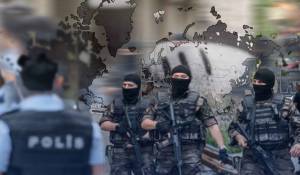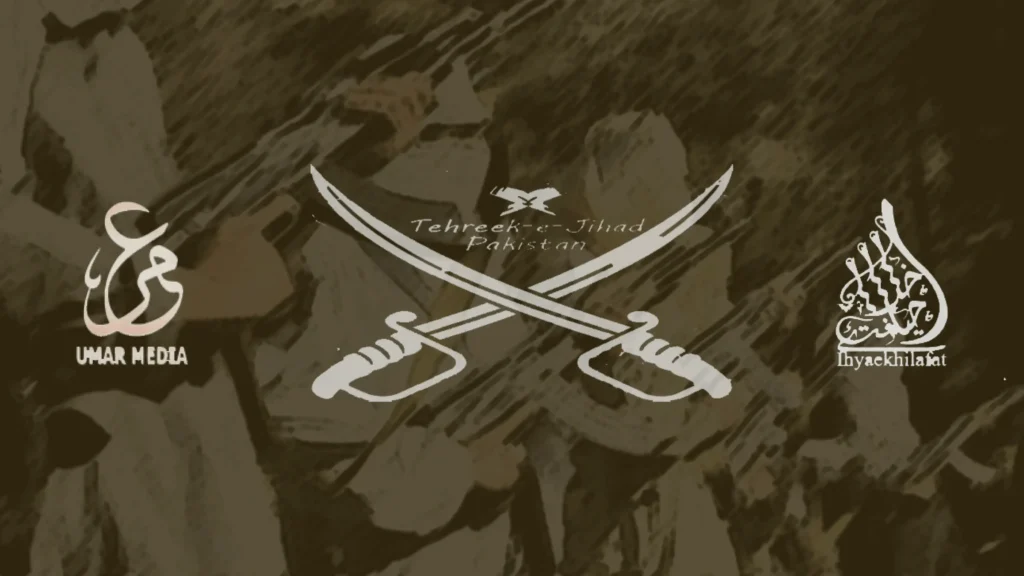
Iftikhar Firdous

December 10, 2025
By | Iftikhar Firdous , Riccardo Valle

Early in the morning on July 12, 2023, a group of five militants belonging to the newly founded jihadist group, the Tehreek-e-Jihad Pakistan (TJP), stormed a garrison post in Balochistan province’s Zhob district.
The TJP immediately claimed the responsibility for the attack, as its spokesman, Mullah Qasim, reached out to The Khorasan Diary early in the morning on Wednesday and stated that militants from the group were involved in the protracted operation.
As a result of the operation, at least nine security forces personnel were killed, while 15 more were injured.
Shortly after Qasim’s claim, however, a message allegedly belonging to Asad Afridi, Tehreek-e-Taliban Pakistan’s (TTP) commander and shadow governor of Khyber Pakhtunkhwa’s Dera Ismail Khan (D.I. Khan), claimed that the TTP – and particularly its Jamaatul Ahrar (JuA) faction – was behind the attack, adding that it was a “retaliatory” operation following the killing of a top JuA leader, Omar Khalid Khorasani, last year in Afghanistan. Previously, Afridi was the deputy of JuA. The message was also shared by former TTP and JuA spokesman, Ehsanullah Ehsan with journalists and from his social media accounts.
As the message gained prominence online, TJP subsequently released a statement urging the TTP to abstain from “taking the credit” for TJP operations, adding that while the group was in favor of collaboration among all jihadist organizations in Pakistan, the TTP had been “relentlessly trying to undermine the TJP” in the recent past.
Mullah Qasim added that the group would release pictures and names of the attackers once the attack gets concluded.
In response, Afridi issued a second message, publicly stating that the TJP is a “paper organization” and that it was just an “online phenomenon with no physical presence”. The statement echoed a similar message issued earlier this year by another key JuA’s commander, Sarbakaf Mohmand, the shadow governor of Zhob.
During the development of the operation, the TTP, too, indirectly addressed the issue by releasing a statement, inviting all people interested in inquiring about the group’s activities in Balochistan to contact it directly without relying on other channels of information.
Subsequently, on the evening of July 12, a statement from the TTP central officially acknowledged the TJP’s claim of the Zhob attack, arguing that “a brother organization” had solely conducted the operation.
The statement announced that the TTP had to convene an emergency meeting of the Central Shura, the group’s main decision-making body, which ultimately decided to depose Afridi from his position as a shadow governor of D.I. Khan due to his “personal statement” in which he claimed it was the TTP that carried out the Zhob attack. The group replaced Afridi with Abu Yasir, who previously served as the deputy governor of D.I. Khan

On the morning of July 13, the TJP issued a full statement detailing the attack while also releasing pictures of the militants. The statement claimed that a five-man suicide squad, led by Maulvi Muslim alongwith militants Umer, Umar Khattab, Usman, and Rehan, stormed the security installation using modern weapons and equipment, including thermal scopes.
This incident further casts doubts – over the relations between the TJP and other jihadist organizations in Pakistan.
In retrospect, this was not the first time that the TJP claimed responsibility for an attack that was arrogated by other militant factions and vice versa. The first instance took place in March 2023, when the TJP claimed a suicide attack in Balochistan, which was also claimed by the Islamic State Pakistan Province (ISPP). While the ISPP published a picture of the attacker and a detailed statement, the TJP failed to prove the authenticity of its claim which was later shared by Mullah Qasim.
It is important to note that initially, the claim issued by the TJP raised doubts about its authenticity; however, the claim was actually shared by the official Twitter account used by Mullah Qasim. The account subsequently shared all TJP claims until June, after which the account was suspended.
The second instance occurred in late April, when the TJP claimed that it carried out an explosion at the counterterrorism office in District Swat, Khyber Pakhtunkhwa province. While authorities said that the explosion was the result of an accident, the group maintained that it was actually the outcome of a “complex operation” carried out with the help of suicide bombers.
Both these claims, ultimately turned out to be fake.
Furthermore, an additional attack in D.I. Khan – claimed by the group in late May involving a suicide bomber driving a rickshaw –had cast doubts on the relations between the TTP and the TJP.
As D.I. Khan is an area with a strong TTP presence, it seemed that the two groups were operationally collaborating in the area. Initially, there were suspicions that the TJP was a joint venture of Al-Qaida in the Indian Subcontinent (AQIS) and TTP in order to carry out suicide operations, which the TTP stopped claiming officially after the one in Karachi back in February 2023. Apparently, the TTP was outsourcing to the TJP the task of conducting suicide attacks in order to avoid public backlash. Indeed, the majority of the attacks claimed by the TJP were all carried out by a cell of suicide attackers, except for minor instances.
The statement that Afridi issued on July 12 regarding the TJP suggested the contrary, that the two groups were actually competing with each other. However, a quick disclaimer issued by the TTP as well as the removal of Afridi confirmed that the two organizations were operating in support of each other. Additionally, Afridi might have felt compelled to issue a statement discrediting the TJP because the latter carried out the May attack in his area of jurisdiction. The July 12 attack, hence, was the second operation carried out by the TJP in JuA’s area of operations, between D.I. Khan and Zhob.
When seen from a broader perspective, the TJP’s language and tactics are similar to organizations that pursue a “globalist” agenda, such as Al-Qaida and the Islamic State. Operationally, post-August 15, 2021, the majority of Pakistani militant factions had reduced suicide raids. On the other hand, the TJP has carried out three major attacks in a short span of time between April and June, deploying multiple suicide bombers in a single attack. This tactic is reminiscent of the Afghan Taliban’s “Badri 313” battalion. The pattern includes psychical attacks on Frontier Corps (FC) posts or camps that culminated into suicide attacks and/or hostage-taking situations. In total, the group has claimed seven attacks so far, including the July 12 one. Six of the attacks it claimed involved suicide bombers.
The first attack by the group was claimed on February 23, 2023, consisting of an assault conducted against the FC forces in Chaman, Balochistan.
Its second attack, carried out on March 6 in Bolan, Balochistan, was also claimed by the ISPP.
On April 24, the TJP claimed carrying out an operation in Swat. This time, the group provided details on the identity of the attacker, naming him Hamidullah, who planted an improvised explosive device (IED) inside a counterterrorism department (CTD) compound.
On April 27, the group claimed another attack, this time carried out with a suicide vehicle born improvised explosive device (SVBIED) by a three-man commando. The militants, identified as Muhammad Ilyas, Sanaullah Arif Mubariz, and Shakirullah, attacked an army compound in Khyber Pakhtunkhwa’s Lakki Marwat district.
The fifth attack occurred on May 12, in Muslim Bagh, Balochistan, which was by far the largest attack carried out by the group until now. A squad of six militants, stormed and occupied for several hours an FC compound. The team was led by Commander Mutasim Billah, while Hamza was identified as the suicide bomber. The rest of the squad included Zakariya, Abu Bakr, Mawlana Hanzala, and Mustaghfar.
The sixth attack occurred on May 27, when the group deployed a suicide bomber on an SVBIED rickshaw that struck a military convoy in D.I. Khan. While the group did not release the name of the attacker, his picture was shared online.
Furthermore, contrary to the TTP and other militant groups’ strategies, the TJP has been avoiding targeting civilian law enforcement agencies, such as the police, limiting their attacks exclusively to Pakistan’s military.
Additionally, while analyzing the profiles of the militants who have been deployed by the TJP for its attacks, it is believed that most of them are originally from Afghanistan, and not from Pakistan. This is in line with the words of Mullah Qasim, who stated that the TJP had been formed by the veterans of the Afghan jihad who fought under the banner of the Islamic Emirate of Afghanistan (IEA). Thus, the TJP might be heavily recruiting militants from Afghanistan who are in search of a new war front to continue their struggle. This could be in accordance with the TTP’s plan – which is avoiding any reason due to which relations between Afghan Taliban and Pakistan might further deteriorate, in line with IEA instructions – or exactly because the TTP is not giving space to militants from Afghanistan.
The impression is that the two groups are actually trying to maintain a façade of being separate entities for public image reasons while being on the same page simultaneously. Asad Afridi, in his statement, has also termed TJP as a TTP’s front. It is important to recall that after the IEA came back to power in Afghanistan, militant organizations in Pakistan such as the TTP, Hafiz Gul Bahadur (HGB), and Akhtar Khalil have been undergoing consolidation in terms of operational coordination; the most vivid example is the recent claims of coordinated attacks between the two major factions of the Pakistani Taliban –TTP, and HGB.
After the failure of peace talks between the TTP and Islamabad in November 2022, there has been a surge in militant attacks across the region. Two different distinct patterns can be highlighted, one followed in KP and the other followed in Balochistan.
In KP, the TTP is conforming to its typical pattern of attacks and activities in areas of its strength. Different parts of the province are almost leased out by the TTP and the ISKP according to their influence. Bajaur, Peshawar City, Khyber, and Orakzai districts are ISKP influenced, while the newly merged districts and adjacent districts in Lakki Marwat, Bannu, Tank, Kohat, and D.I. Khan are left to the TTP.
The nature and type of activities conducted indicated a typical style of attack, from sniper fire, IEDs, and fire raids on posts to suicide attacks. Furthermore, the attacks are conducted by respective groups in their tribal zones or allocated areas of operations. The intensity of actions has greatly increased while the pattern, as well as the command articulation, remains the same. These activities are smaller in nature and appear to be approved and conducted by local commanders within specific geographic zones. In the last seven to eight months, almost a dozen smaller groups have joined hands with the TTP in Southern KP, but no new separate militant group has been formed with the exception of the TJP.
On the other hand, in Balochistan, the pattern of militant activities has witnessed a change, with an increase in the number and intensity of actions observed in Northern Balochistan. While this area was understandably under the TTP’s influence, the emergence of a new, lesser-known militant outfit, the TJP, appears to be a conglomerate for top militant outfits in the region. The groups operating in Zhob and Northern Balochistan are mostly from tribal districts, like Mohmand militants affiliated with the JuA.
Meanwhile, the JuA seems to be the jihadist actor which is suffering the most from this latest attack. Since the mid-2022s, with the killing of its leader Omar Khalid Khorasani, the JuA seems progressively marginalized within the TTP. This also seems to be the effect of JuA members’ actions, when in January 2023, a devastating suicide attack struck a police mosque in the city of Peshawar, and accounts linked to the current JuA leader and Central Shura member Mukarram Khorasani and Zhob’s shadow governor Sarbahkaf Mohmand claimed the attack. The move compelled the TTP to issue a statement denying any involvement. Subsequently, reports that Khorasani and Mohmand have been sidelined surfaced during the following months. The same incident occurred with Afridi, this time resulting in his official removal from his position.
The inherent isk of the marginalization of the JuA within the TTP is that it might disgruntle its members, forcing them to act more independently, defying the orders of the central leadership, or leaving the TTP umbrella in search of new organizations which might be willing to welcome them, including the Islamic State Khorasan Province. Moreover, at this stage, any splintering within the TTP might upset the Afghan Taliban, who are believed to be behind the reunification process of the TTP.
Afridi, shortly after his demotion, issued a statement commenting on the decision of the Central Shura of the TTP. He claimed once again that the TJP had no actual existence but it was a front of the TTP. He also harshly criticized the TTP Central Shura for removing him as the shadow governor of D.I. Khan District, claiming that the decision created rifts within the organization and might lead to undesirable consequences. Afridi further stated that he is in possession of all names, pictures, and battle plans for the operation. On the other hand, he rhetorically asked why no action within the group’s investigation has yet been taken in identifying and punishing those responsible for the killing of Omar Khalid Khorasani.
In view of the situation, tensions are rising within certain fringes of the TTP.